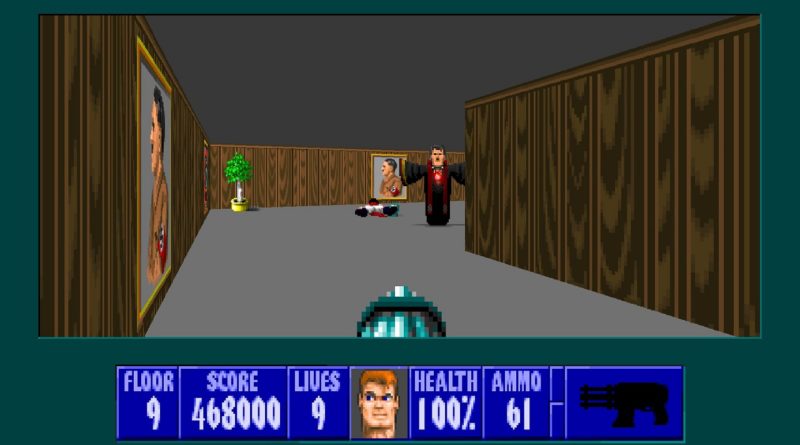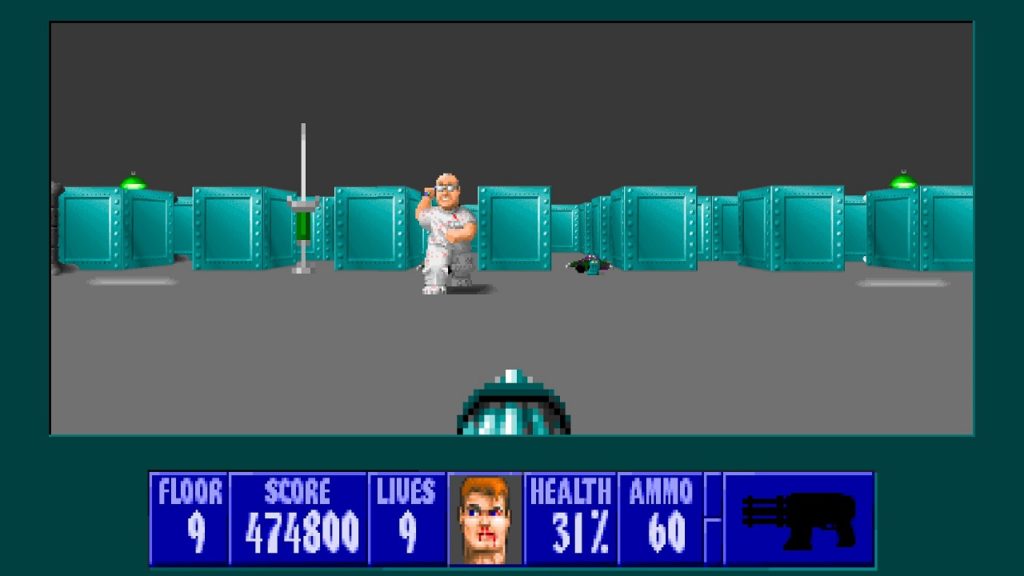Wolfenstein 3D: Does it Hold Up?
At the start of the pandemic, I finally learned why Doom is such a historically well-regarded game. After that, I moved forward and played Quake to see where the developers went from there. Now, my friend Ryo gifted me Wolfenstein 3D for Christmas, letting me experience where it truly all began.
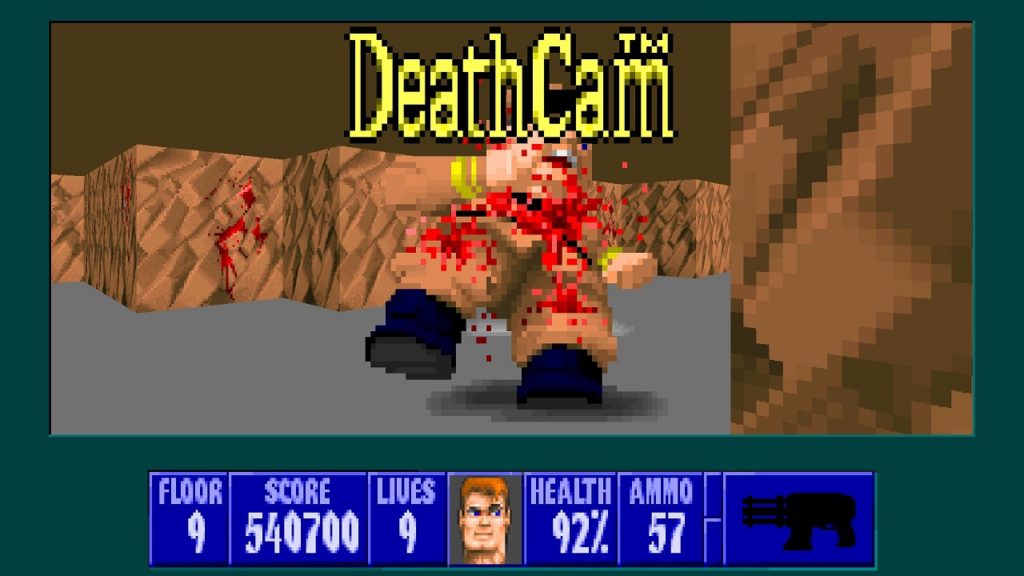
90s Gaming At Its Height
Wolfenstein 3D is one of the earliest first-person shooters, widely considered the game that popularized the genre. Everything about the experience is visceral and unashamed; your enemies are blatant Nazis who explode into puddles of gore when they die. Swastikas and portraits of Hitler litter the scenery, creating a bizarre juxtaposition with the otherwise bright colorful architecture. Overall it’s honestly a pretty trippy experience, with far less of a coherent world design than future id titles. You can’t really believe Castle Wolfenstein is a real place, unlike the plausible space stations/hellscapes in Doom.
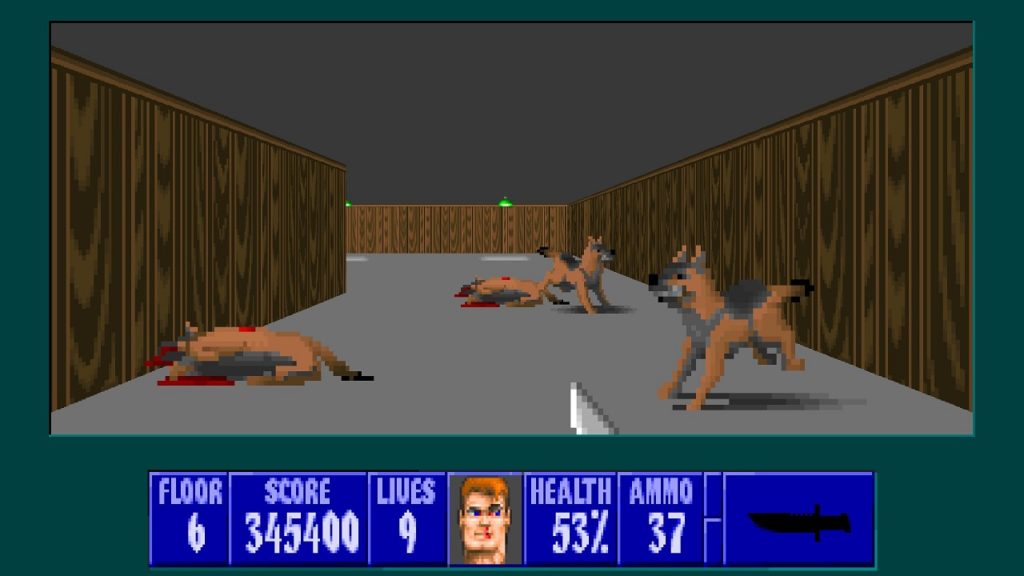
Mod It First!
A note to those hoping to play the Steam version; don’t play the game without an improvement mod. Wolfenstein never recieved a similar enhancement port like Doom and Quake did. So without mods it’ll look small, there’ll be no minimap and you’ll be stuck using the mouse to move. I installed ECWolf and highly recommend it. It’s an easy installation and modernizes the display/controls to what you’ll expect.
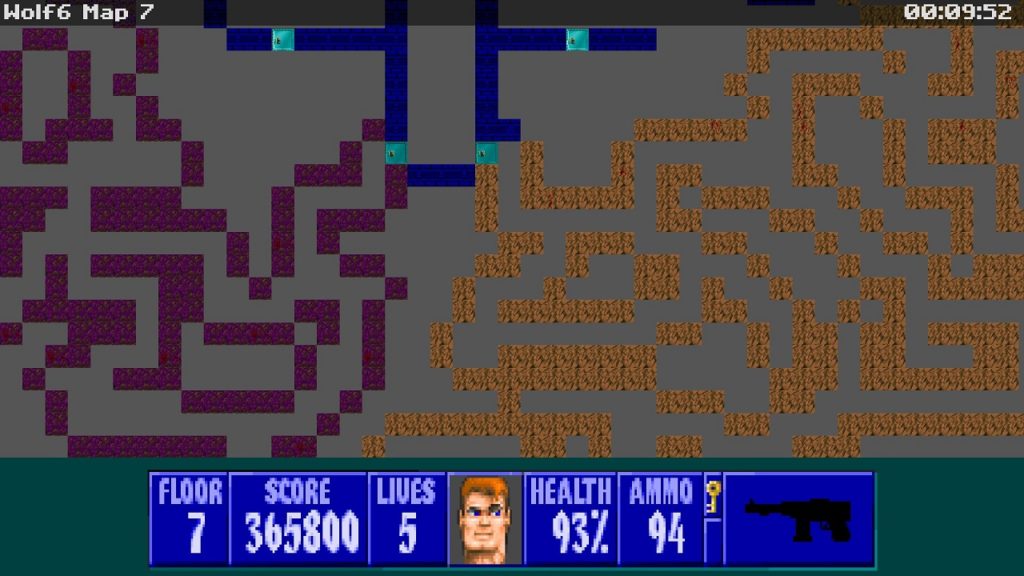
While I think everyone should play Doom, it’s harder for me to recommend Wolfenstein, unless you really enjoy historical old-school shooters. It’s far more simplistic, with only a handful of enemies, weapons, and legacy mechanics from the arcade school of thought. Useless treasure, a superfluous lives system (you can save at any time?), and the high-score screen will all seem out of place to a modern gamer. The enemies are also almost-entirely hitscan, meaning the game lacks that projectile-dodging element I loved in Doom.
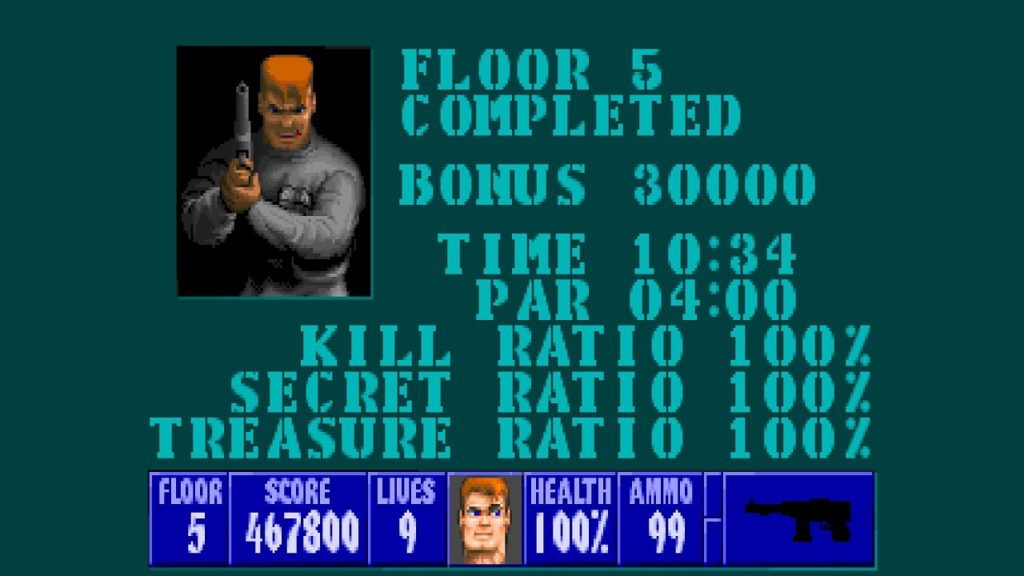
Map Design
Still, considering how nascent the tech was, it’s an incredible accomplishment for its time. And the developers absolutely did everything they could with the pieces available to them. The secret levels in particular were always memorable deviations from the usual formula. I’m truly astounded they managed to invent a rudimentary stealth level, arguably the first one in FPS history. But I also understand why John Romero has stated in an interview that the team grew to hate level-building for Wolfestein. It must have felt constraining to be restricted to 90-degree walls and lack any sort of environment manipulation beyond opening doors. In particular, it was really weird collecting keys and not having to worry about new ambush enemies spawning in retaliation.
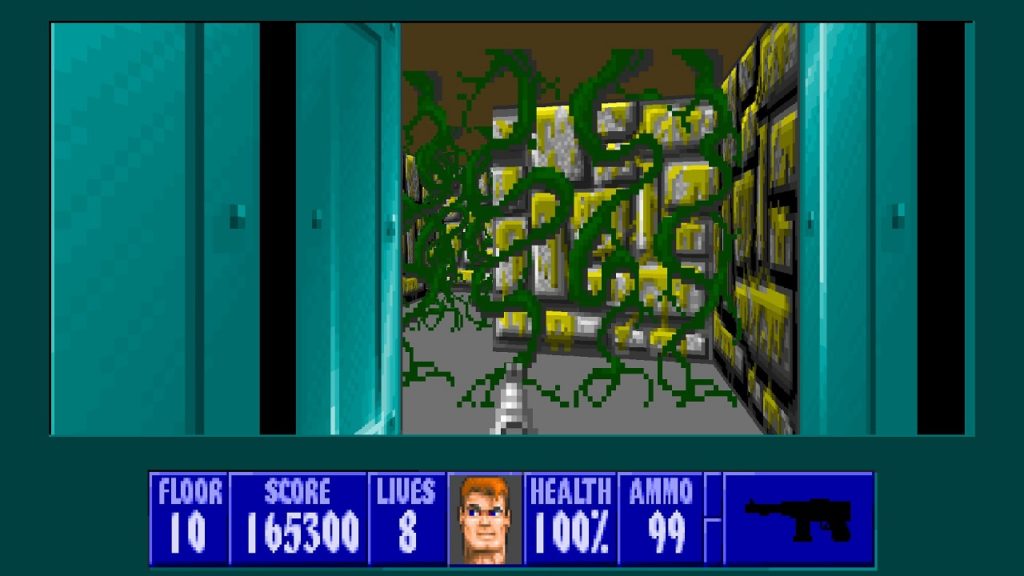
Fast-paced Episodic Gameplay
While it’s passé in the modern day, the enemy AI was a huge selling point for the game. They’re surprisingly dynamic, starting off unaware and then chasing the player even around corners once they spot you. They can open doors, walk routes, and they flinch when taking damage. And, scariest of all, they hear gunfire even if they’re in a completely different area. There were plenty of wonderful “Oh Crap” moments where I killed somebody and heard a chorus of two-bit German exclamations from the neighboring rooms. As previously mentioned, I wish they’d made more use of the projectile enemies, as all the hitscan wore on me after a while.

I personally preferred the original three episodes to the later ones. The first trilogy had a more engaging plot (escape jail, stop the mutant-creating science program, kill Hitler) and introduced new mechanics as time went on. Seeing new enemy types, fighting those terrifying mutants, dodging fireballs from wizard-Hitlers… It kept remixing the gameplay in new engaging ways. And then the later levels add zero new enemies (except bosses), meaning it gets really samey after a while.
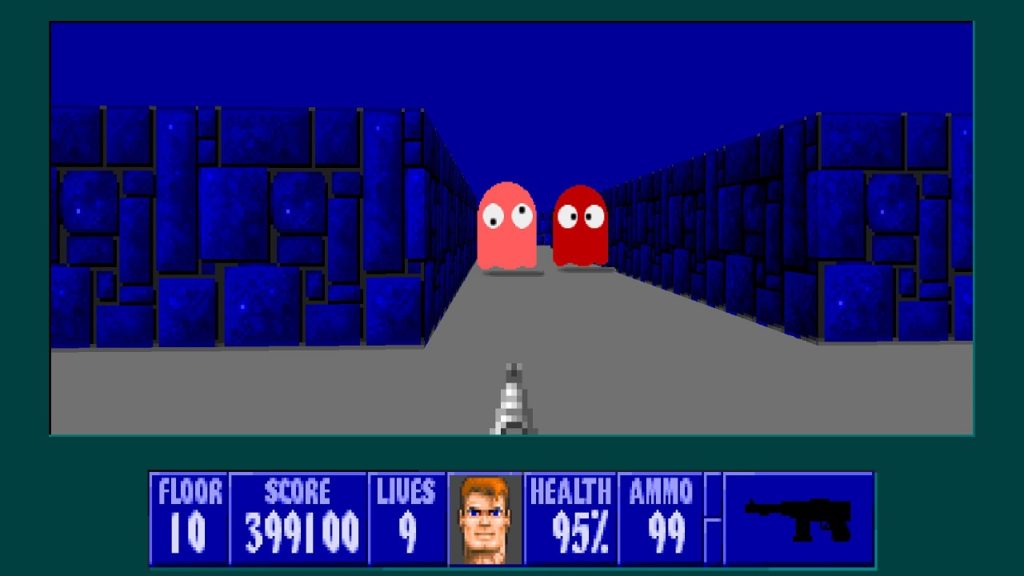
The Weapons
Wolfenstein 3D’s weapon design is so interesting because of how bland it is. No game had ever included a “weapon roster” before; all earlier FPSes gave the player a single attack, or was more of a spellcaster/fantasy-style game, so id literally had to invent the ordnance hierarchy from the ground up. Which is probably why the only difference is “the next gun shoots more bullets faster”, making each one strictly better than the previous unless you’re running low on ammo. (And since they share a common pool, that’s even less frequent than you’d think.)
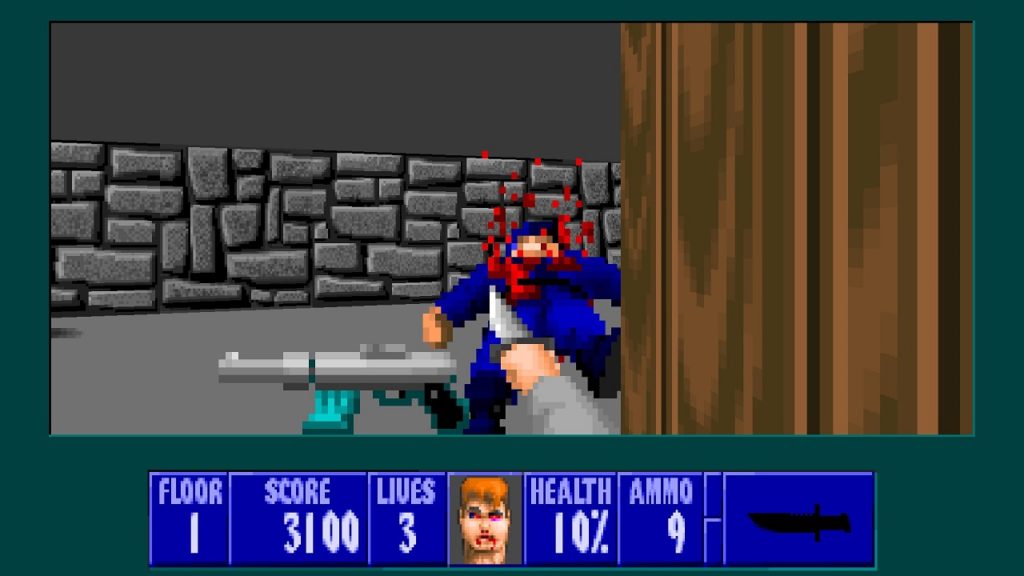
The SMG in particular I find really interesting because it’s almost too versatile. With its steady automatic fire, decent accuracy, and decent damage, its a workhorse with no real downside. In many cases I found myself preferring it over the chaingun because its slower firing speed means I’m not constantly running out of ammo. It’s telling that the SMG is the only weapon that didn’t port forward into Doom, they literally skipped that firearm type because they wanted the player to have to constantly shuffle to use the best tool for the situation. The SMG would have been “the all-rounder you wield by default” and the game would be less dynamic for having it.
Conclusion
Overall, the biggest takeaway for me was just how many tech advancements id crammed into Doom, which came out just 1½ years after Wolfenstein. I love the way they showcased that flex within the secret Wolfenstein level in Doom II. You fight your way through the old blocky neon rooms, then open this hidden staircase to see variable lighting, shadows, curves, flashing lights… When going backwards, these elements are sorely missed in Wolfenstein. Still, it’s a bargain $5 on Steam and I think any shooter fan should at least experience the first three episodes. You gotta pay respect to the game that birthed the entire genre.
